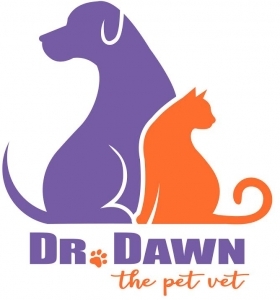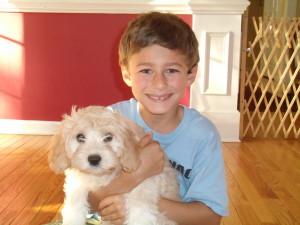 In Part 1 of this post theme, I discussed some basic behavior training techniques, which I have been recommending for years. Hopefully they have been helpful. I wanted to address some common adolescent issues commonly seen by both dogs and cats, and how to deal with them.
In Part 1 of this post theme, I discussed some basic behavior training techniques, which I have been recommending for years. Hopefully they have been helpful. I wanted to address some common adolescent issues commonly seen by both dogs and cats, and how to deal with them.
Play Aggression
If your pet becomes too aggressive during play, you need to step back from it and channel their energy into more productive ways to encourage play without making it into a situation where someone may get bitten or hurt.
-Exercise: Try taking your dog for a walk, play catch, etc. It will help refocus his/her energy.
-Mental stimulation: training session, something to distract him from the aggression.
-Play: fetch, soccer, showing him/her a better way to play, instead of the aggressive way just exhibited
-Obedience and leadership exercises: reinforce the sit/stay, remind him who is the boss (not him), allow the pet to calm down
-Socialization: to other animals, and people. Extremely important, especially while young
-Don’t sit on the floor with pup or kitten. This will further confuse him, particularly if he is playing aggressive with you and sees you as an equal.
– If it is a hard bite: Yell “Ouch” and stop play immediately. He will have a loud verbal punishment to get his attention, and have a negative consequence (no more play).
-Interrupt the behavior with a shake can, water gun, compressed air can. All will get the pup or kitten’s attention, as above.
-Head halters: used with dogs, in conjunction with training. Muzzles will do the same thing, but if you are in need of muzzling your pet often, you should really consult a trainer, or your veterinarian.
-Time out: remove the pet from the situation, and/or yourself from the pet. They will soon figure out that their behavior is undesirable to you, and they no longer get to play when they do it.
-Train them to stop mouthing or biting while playing on command. Thus, address the behavior immediately and demonstrate to the pet what you do not want them to do. If the behavior escalates, use the other recommended behaviors.
Housetraining: Can be very smooth if you are able to follow these rules. Try:
1. Teach puppy where to go. The speed at which the pup learns where it is supposed to eliminate depends on how consistently the owner accompanies it to the proper elimination area and praises it. They love to please you. Show them how happy you are when you are happy. Also, an older pet to follow can be an invaluable ally in your attempt to train the puppy.
2.Control access to food and water. Feed the new puppy 3-4 times a day, and eventually twice a day, at the same time every day. Only leave the food down for twenty to thirty minutes. Do not feed for three to four hours prior to bedtime.
3. Adequate supervision and confinement. Until the puppy has not urinated in the house for four consecutive weeks, it is often recommended to be under constant supervision by a family member who is actually watching it at all times. If not, I recommend confinement to a crate or a small room. A leash can be an important tool for preventing the pup from sneaking away. I often recommend leashed sessions within the home, which tends to result in the pup forgetting he/she is tethered. If you start to see the beginning of an undesirable behavior, you can briskly, and gently tug on the leash while issuing a stern reprimand. Then, immediately take dog outside if there was squatting, for example. You will increase your odds of redirecting him/her to eliminating at the proper location and prevented an accident that would have confused the puppy. Inadequate supervision and confinement are the oat common reasons for failure to house train puppies.
4. Teach the pup to signal when it has to eliminate. This can be done by frequently keeping the pup on a leash indoors, as described above. Especially do this when they are more likely to need to go eliminate (i.e. after a meal, nap). Puppies quickly learn to sneak away from you to eliminate so they can avoid a scolding. If you prevent the sneaking away component, they will often brome anxious and vocalize or fidget. You will be nearby to notice and act quicker to take the pup outside. It doesn’t take too many repetitions of this scenario for your puppy to learn that being close to you and vocalizing or fidgeting results in a trip outdoors.
 5.Odor control. Use a good commercial product made specifically for pet elimination odors. I have found K.O.E (Thornell corp.) , and Nature’s miracle to be effective, and inexpensive. I also recommend the system sold by Planet Urine (powder and liquid components), particularly for urine stains.
5.Odor control. Use a good commercial product made specifically for pet elimination odors. I have found K.O.E (Thornell corp.) , and Nature’s miracle to be effective, and inexpensive. I also recommend the system sold by Planet Urine (powder and liquid components), particularly for urine stains.
6. Punishment. It should be avoided. The only correction permitted is a loud “No” used to interrupt the pet when it is caught in the act of eliminating in an inappropriate area. Submissive or greeting urination should never be punished.
Every dog owner should attend at least one puppy training class. I thing that working with puppies in a class situation has special advantages over private training. You get a better idea of how the pup interacts with the family in situations outside the home. They learn with temptations not present in the home. They are very good for socializing the pups to humans as well as other puppies.
Socialization
Even though dogs have been domesticated for thousands of years, each new puppy that comes into our world must learn about humans. Socialization is the process during which puppies develop positive relationships with other living things. The most sensitive period for successful socialization is during the first three to four months of life. The experiences the pet has during this time will have a major influence on its developing personality and how well it gets along with people and other animals when it grows into adulthood. It is very important for pups to have frequent positive social experiences during these early months in order to prevent asocial behavior, fear and biting. If inadequately socialized they may develop irreversible fears, leading to timidity or aggression. This is not to say that socialization is complete by four months of age, only that it should begin before that time. Continued exposure to a variety of people and other animals, as they grow, is an essential part of maintaining good social skills. Also important is to expose your pet to new environments and stimuli at this time (e.g. sounds, odors, locations), to reduce the fear of the unfamiliar that might otherwise develop.
Puppy classes are an excellent way to ensure these multiple contacts. Puppy training and classes are readily available in many communities, as well as at some veterinarian offices. Hopefully you will find a class that does not train by punishment. I encourage the entire family to attend, and all learn the same techniques. Consistency makes for less confusion for the pup, which will make the learning process easier and quicker. And it is important that pups learn that children are not different than adults, although they can seem quite different to a puppy. They need to learn to be comfortable around them, which they can only do by being accustomed to them, and not being fearful of them.
References:
There are a number of excellent books and training guides available. Some are directed at you understanding the canine and feline behavior, which you may find a more helpful approach.
1. Bradshaw JWS. The Behaviour oof the Domestic Cat. Redwood Press
2. Fogle B. The Cat’s Mind. Howell Book House
3. Fogle B. The Dog’s Mind. Viking Penguin
4. Houpt, Katherine. Domestic Animal Behavior, 3rd ed. IBlackwell Publishing
5. *** One of my favorite books, Inside of a Dog, by Alexandra Horowitz
This book was on the bestseller list, and is available in paperback, and for good reason. I will admit that the beginning can be a bit clinical and detailed, but I still recommend reading it. I learned so much, and was reminded about so much, of what it is like to be a dog, and found it entertaining and enlightening it to see why they do what they do.
The author evokes the dog’s perspective by interweaving the science of dog cognition and perception with personal reflections on her dog’s behavior. Ranging from what it might be like to be able to smell sadness in humans or the passage of time, to the experience of hearing the hum of fluorescent lights, to why some dogs relentlessly pursue bicycles or balls. I think that anyone who lives with dogs should read this book.
Training and behavior problem based books:
1. Weston, David. Gentle Modern Method of Dog Training.
2. Ackerman L; Landsberg G; Hunthausen @ (Eds): Cat Behavior and Training: Veterinary Advice for Owners, TFH Publications 905-881-2752
3. Ackerman L; Landsberg G; Hunhausen W (Eds): Dog Behavior and Training: Veterinary Advice for Owners, TFH Publicaiton
3. Dodman N. The Cat Who Cried for Help. Bantam, NY
4. Dodman N. The Dog Who Loved Too Much, Bantam
5. Dunbar I: How to teach a new dog old tricks. James & Kenneth Publishers.
Dr. Dawn
Please share and subscribe here







